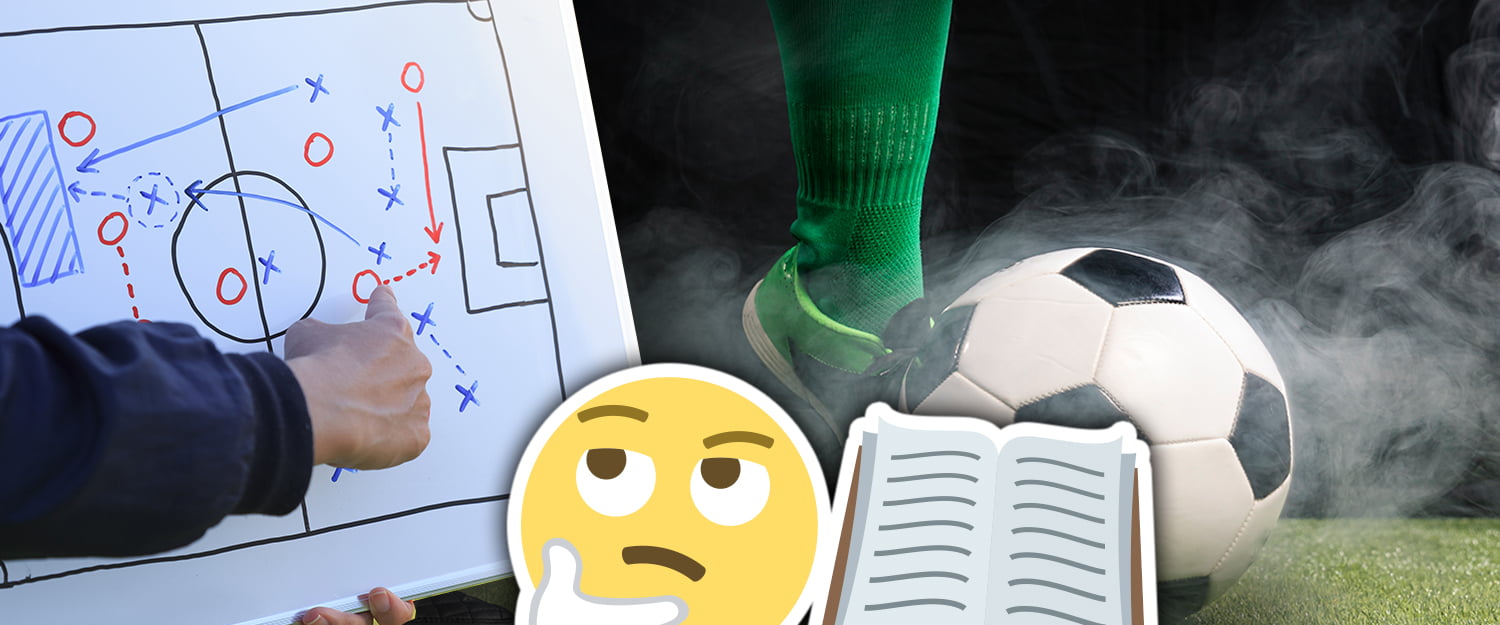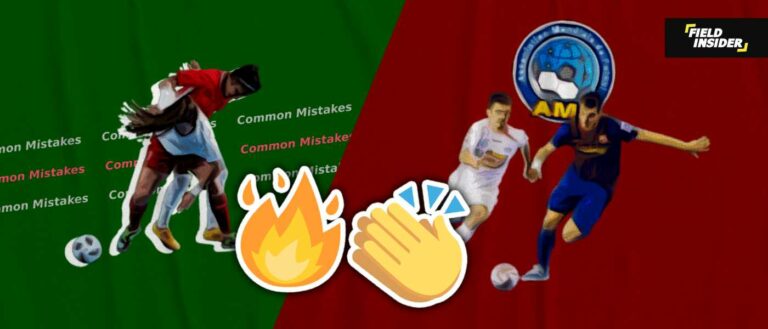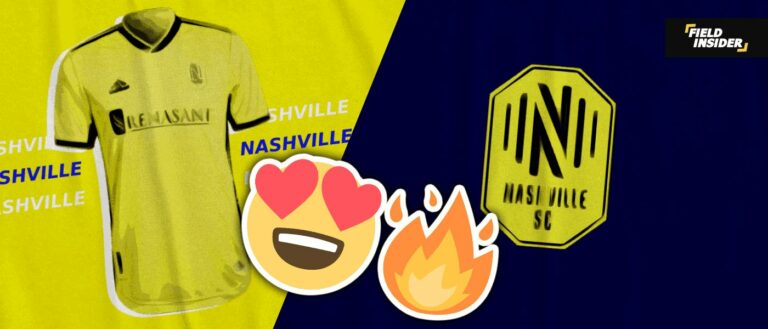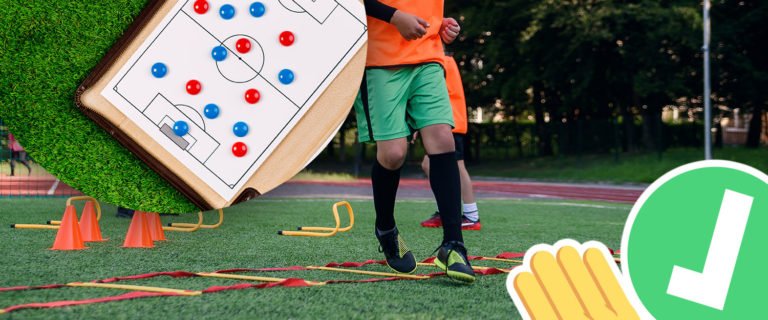Youth Soccer Rules & Regulations: A Detailed Guide
Soccer, like all other sports, has its own set of rules and regulations. These rules, however, vary by age group, such as field size, ball size, and the number of substitutes. So, what are the differences between youth soccer rules and regulations?
When looking at different resources, you may notice variations and non-uniformity in soccer rules and regulations, and the rules may change depending on the circumstances.
However, the rules for goal size and ball size are mostly the same, as mentioned below.
The rules for the number of players, the number of substitutes, free kicks, and penalty kicks, on the other hand, can vary.
Ball Size
When it comes to the ball size, there are primarily three sizes of soccer balls in use: 3, 4, and 5. Although the sizes range from 1 to 5, sizes 1 and 2 are mini balls that are not commonly used in games.
The ball size for U12 and older is #5, while the ball size for U8 to U12 is #4. Similarly, the ball size for the U8 age group would be #3.
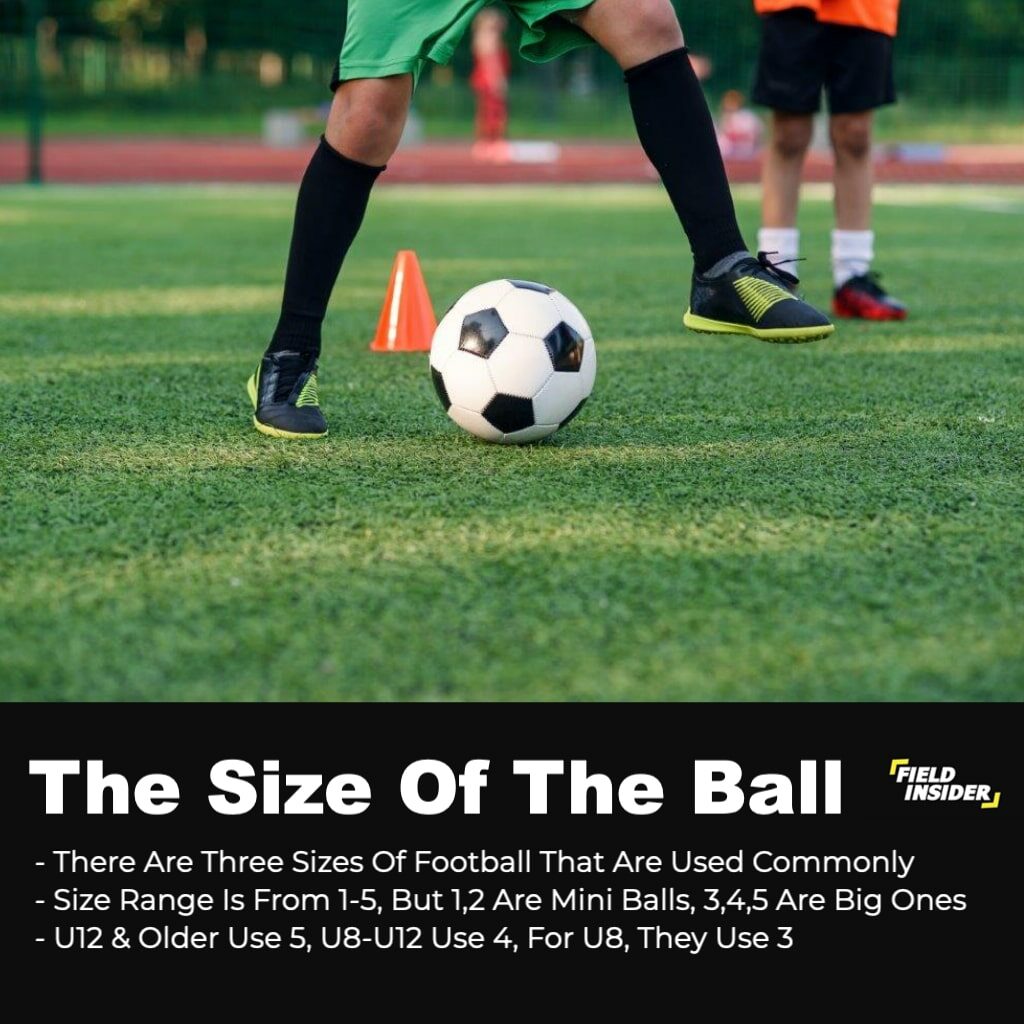
Goal Size
The size of the goal varies according to age. The maximum goal size in feet for U6 to U8 age groups is 4′ x 6′, 6.5′ x 18.5′ for U9 and U10, 7′ x 21′ for U11 and U12, and 8′ x 24′ for U9 and U13.
If you want to learn more about the goalpost and its dimensions, click here. We’ve written a detailed piece about it. It’s in our soccer section! Please thank us later.
Duration/Length of the Game
The following are the game lengths for each age group as specified by US Youth Soccer and its Association:
- Two 45 halves for U17-U19
- Two 40 halves for U15-U16
- Two 35 halves for U13 and U14
- Two 30 halves for U11 and U12
- Two 25 halves for U10 and U9
- 4-10 quarters for U6-U8
Overtime Periods
The overtime periods for all age groups include:
- Two 15 halves for U15-U19
- Two 10 halves for U11-U14
Besides, there are no overtime periods for ages U6-U10
Playing Area
The playing field is divided into two halves by a halfway line, and the midpoint is marked by a center mark on the halfway line. This line, also known as the retreat line, is used when the game is restarted with a goal kick.
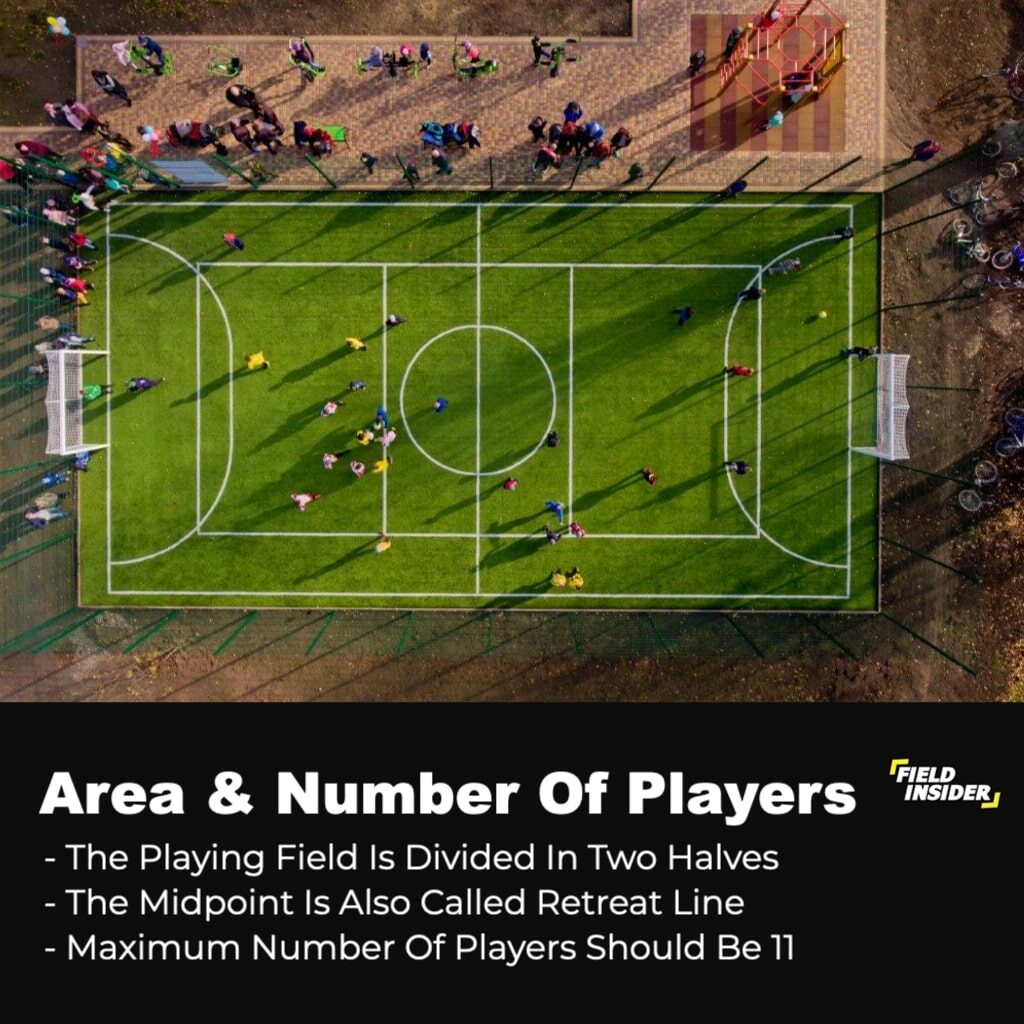
Maximum Number of Players
Both teams can have up to eleven players and seven players to begin the game. However, the number of players varies by age group. However, the maximum and minimum number of players per team for players aged U14 and up remains eleven and seven, respectively.
For age groups under U7 and U8, the maximum number of players per team, including the goalkeeper, is 5v5. 9 players per team is the recommended size for U12 soccer players. Furthermore, according to Football Association and Competition rules, players can only play against and with people their own age.
Every member of the team should get equal playing time whenever possible. The best recommendation and practice is to give each player 50% of the time in each game.
Furthermore, players may be required to show proof of identity and age before or after the match begins.
Necessary Playing Equipment & Uniform
shin guards & protective gear:
Every player must wear shin guards, matching shirts with sleeves, shorts, and long socks, and the socks must completely cover the shin guards. Under the shorts, sweatpants can be worn. Shin guards will be required for all players. The goalkeeper should wear a distinctive playing strip.
shoes:
Shoes with a flat sole or turf are required; cleats are not permitted. It is critical to select footwear that is appropriate for the pitch’s surface. Avoid using metal studs, for example, on an artificial grass pitch.
uniform & kits:
Players should dress appropriately for the weather, and team members should wear the uniform issued by the APR&CR. The player will be ineligible for the game if his uniform has been altered or he is not in uniform. The goalkeeper’s jersey should not match the jersey of the opposing team.
The teams should also wear different colored uniforms to differentiate themselves from the opposing team during the game. Shirts must be tucked in during the game.
add ons & accessories
Furthermore, jewelry, a hard cast, head decorations, and hair beads are not permitted in the game. Wearing a headband no wider than 2 inches wide made of nonabrasive one-color cloth, rubber, soft leather, or fiber is permitted. Additionally, elastic rubber bands for hair management are permitted.
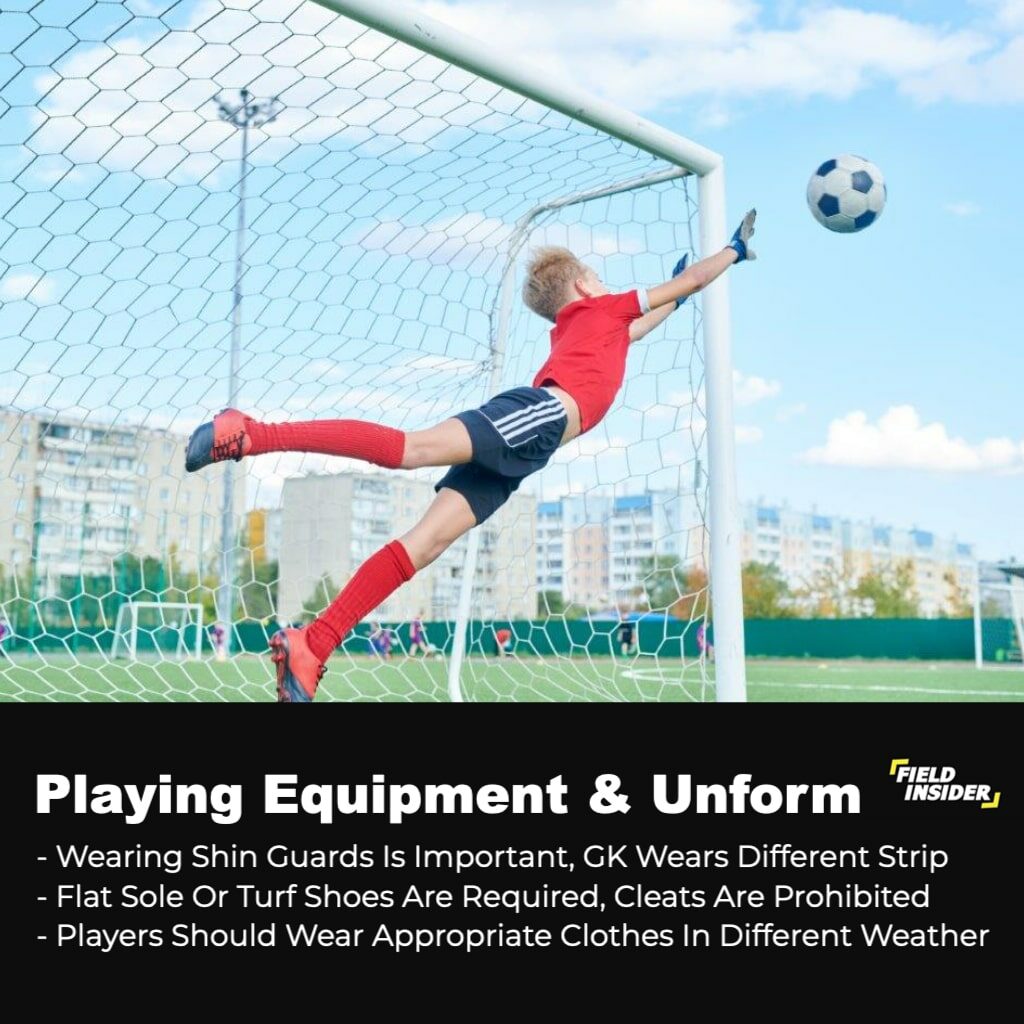
Referees & Assistant Referees
A referee oversees each match and has the authority to enforce laws and punish anyone who violates the youth soccer rules. An assistant referee assists the referee by pointing out game issues such as handball, foul, and offside during play, but the referee makes the final decision.
Free Kicks
Opponents must be 10 feet (sometimes yards) away from the ball for free kicks. The ball must remain stationary before the free kick is taken. Free kicks can be either indirect or direct, though, at the youth level, free kicks are sometimes classified as indirect.
Penalty Kicks
There are no penalty kicks for the U6 to U10 age groups. Penalty kicks are usually awarded when an opponent commits a direct free-kick foul inside the penalty area. The ball, however, must be kicked forward, and players must stand behind the ball. All players, with the exception of the goalkeeper, must stand outside and at least 5 yards away from the penalty mark.
Goal Kick
When a goal is not scored, and the ball passes in the air or on the ground from over the goal line and is last touched by a team member, the opposing team is awarded a goal kick.
Similarly, if the ball enters directly into the kicker’s goal and exits the penalty area, the opposing team will be awarded a corner kick.
Scoring
A goal will not be scored from an indirect kick or a direct kick-off. To score a goal, the ball must be legally kicked or fully passed between the goal posts and beneath the crossbar or by penalty kicks, direct free kicks, or action kicks.
Ball In or Out of Play
Whenever the ball has completely crossed the touchline or goal line, whether in the air or on the ground and when the referee has stopped play, for example, when someone has broken the law or a player has been injured during the game. Otherwise, the ball remains in play.
Misconduct & Fouls
Tripping, pushing, and holding are common fouls that result in a free kick. Furthermore, fouls may include charging or handballs (touching the ball with arms or hands, except for a goalkeeper). Other offenses include:
- Using hands to prevent the goalkeeper from releasing the ball
- Pushing, charging, or kicking an opponent
- Keeping the opponent at bay
- Playing the game in a dangerous manner
- Striking or elbowing any opponent
- obstructing an opponent’s progress
- When an opposing player takes a free kick, they appear in the protected area.
Fouls committed irresponsibly or carelessly by age groups U12 and above will result in a yellow, blue, or red card, as well as a penalty or free kick.
A yellow card serves as a warning, while a red card disqualifies the player. Members who have been disqualified may not re-enter the game. Receiving two yellow cards equals receiving one red card. However, no cards are shown to U6 to U10 players.
The Start & Restart of the Game
The game begins with a kick-off from the center point, and if the opponent scores, the game is restarted with a kick-off. In addition, each player should be at least ten yards away from the ball and in his own half.
To determine which team will kick off, the referee flips a coin.
Prior to the player taking the kick-off, the ball must stand stationary on the center point. The kick-off is taken, and the ball enters play immediately after the referee signals with a whistle.
Throw-in
The throw-in is taken if the ball leaves the field or crosses the field’s sideline.
The throw-in rule states that the ball must be thrown over the head with both hands. When a member last touches the ball as it crosses the sideline in the air or on the ground, the opposing member will be awarded the throw-in.
It is also the referee’s responsibility to allow young players, typically U8 and below, to learn the game and to give them a second chance.
Substitutions
Players may be replaced by any other player, for example, if a player sustains an injury during the game or becomes tired and is unable to continue. Furthermore, except when disqualified, any player can reappear in the game.
The average number of substitutes for the youth section is four.
Final Word
So these are some of the basic and major youth soccer rules and regulations, but they are sometimes subject to change.
To summarize, these youth soccer rules may appear difficult to read at first, but as you watch the game more closely, you will begin to understand the importance of these youth soccer rules and how they are implemented.


